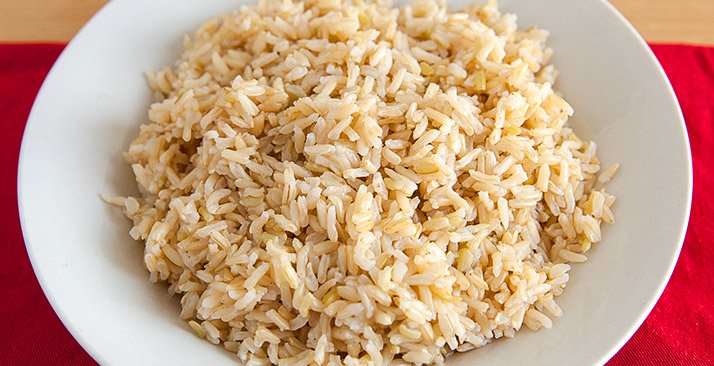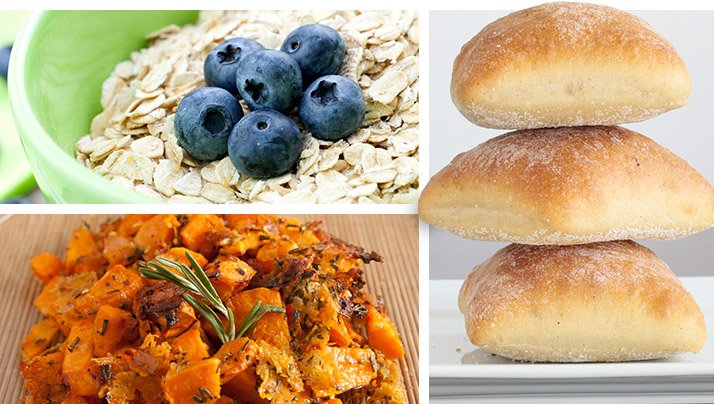A lot of fat-loss plans involve cutting out carbohydrates. But carbs are good for you—they supply energy for your workouts, as well as providing ample fuel to be used throughout the day. Ingesting carbs also replenishes glucose and glycogen stores to prevent fatigue.
Carbs are not essential to the body, but they make dieting (and eating in general) a lot easier and more pleasurable. Eating carbs at the wrong times can, however, cause them to be stored as fat. Carb cycling is a way to enjoy this delicious macronutrient's benefits without it leading to fat gain. You can even use this approach for weight loss.
What Is Carb Cycling?
Carb cycling means staggering the amount of carbohydrates you eat, so some days you eat more of them and some days you eat less. The idea is to get the benefits of carbs on some days, and the benefits of eating low carb on other days—the best of both worlds.
How to Carb Cycle
A simple way to cycle carbohydrates is to eat low carb for three days followed by two higher carb days. The low carb days will help with weight loss and insulin sensitivity. The high carb days aid in recovery, replenish glycogen, and support muscle growth.[1] Don't count fibrous vegetables into your total carb count for the day. They are low in calories and carbs, are a good source of fiber, and won't affect your carb cycling. Only count starchy complex carbs (like sweet potatoes).

Do keep a nutrition journal to chart progress. This takes the guesswork out of dieting, and you can use it to see how your body responded to certain tactics and make adjustments.
How Many Carbs Should I Eat While Carb Cycling?
To determine just how many carbs you should eat on your highest day on the plan, start with 1-1.5 grams of carbs per pound of body weight. Begin using 1.5 grams and adjust according to your results.
Some tweaking will probably be necessary, as some of us are a bit more "carb sensitive" than others. Activity level, training intensity, age, and even sex, will determine how many carbs you need, but as a general rule a maximum of 200 grams of carbs per day is a good place to start.
Sample Carb Cycling Plan
Here's an example of how to do the 5-day carb-cycling method using 200 grams of carbs as the highest amount on a high day.
- Day 1: 150 grams
- Day 2: 100 grams
- Day 3: 50 grams
- Day 4: 125 grams
- Day 5: 200 grams
You'll drop 50 grams of carbs each of the first three days, then increase by 75 grams for the next two days. Some people prefer to raise their intake of healthy fats on lower carb days or rest days to make up for the lost calories. That's fine to do, but it can interfere with weight loss since fat is a calorie-dense macronutrient.
If you don't increase your fat intake, you'll burn more fat as fuel on the low-carb days, especially if you're training hard, doing cardiovascular workouts, and cutting calories.
How Does Carb Cycling Burn Fat?
Carb cycling can work great for weight loss. On your low carb days, you'll lose fat. Lowering your carbohydrate intake also increases insulin sensitivity, which is associated with better body composition (i.e. lower body fat).[2]
High carb days cause your body to burn more calories. They also increase leptin, the hormone that keeps you from being hungry. These two effects prevent the low-carb days from stalling your metabolism and leading to a binge, so you can keep losing weight.[3]
Reaching A Plateau
Eventually, you will likely reach a fat-burning plateau and will have to change things up a bit. When that happens, have 3-4 high-carb days in a row, or have a cheat meal one day. This will jumpstart your metabolism, enabling the fat burning process to resume.
Another way to turn your weight loss back on is to go to zero carbs for three days. This is the only time to take fibrous vegetables into consideration, as no carbs whatsoever should be ingested during the three zero-carb days.

Do not stay at zero carbs for any longer than three days, and never go below 50 carbs during the rest of the diet. Any lower and your thinking becomes cloudy, since the brain needs a certain amount of carbs to function optimally.
What Kind of Carbs Should You Eat When Carb Cycling?
Always use carbs from clean foods, not junk foods. Eat the majority of your carbs early in the day and at the post-workout meal, tapering off as the day goes on. Don't worry about the glycemic index of the foods, just focus on keeping total carb intake for the day at your target level.
Sources of Clean Carbs
These are the best sources of clean carbs to include in your meal plan when dieting in general, and when you carb cycle:
- Baked potatoes
- Sweet potatoes
- Rice
- Oatmeal
- Cream of wheat
- Grits
- Squash
- Apples
- Peas
- Corn
- Bananas
- Rice cakes
- Beans
- Quinoa
- Berries
Simple Carbs
The only time to eat simple carbs is at the post-workout meal, when you should take in 50 grams of dextrose with a whey protein shake immediately after training. Add these carbs into your daily total, because even though they're utilized efficiently by the body at the post-workout feeding, they're still carbs.[1]
Junk Carbs
Sugar-laden junk foods are always bad and should have no place in your diet, not even if you're carb cycling. Quitting junk food altogether can be a lot to ask, but the more you cut down, the more you'll lose body fat.
Try to cut back on junk food gradually until it is totally eliminated from your diet, except for the rare treat. You'll probably find that once you stop eating it you won't miss it as much as you'd expect.
Get Your Head in the Game
It's common to hear "everything in moderation," even with dieting. The idea is that if you're too strict, you'll feel deprived and won't stick with the diet.
But with carb cycling, as with any diet, if you have aggressive fat-loss and muscle-growth goals, such as for a bodybuilding competition, moderation can get in the way of success.
Terms like "refeed," "cheat meal," and "cheat day" almost always come up (even in this article). These ideas can be used to your advantage, but it's best to wait until you're pretty close to achieving your desired body-fat percentage before even thinking about them.
Simply put, you must make some sacrifices and give up all unhealthy eating habits if you want to succeed in losing fat or winning a contest! Flip the switch in your mind to eat "clean" and don't even think about giving up.
There can be no half measures. Getting your carb counts right is important, but a huge part of diet success is getting in the proper mindset and staying completely focused on achieving your goals. How much weight you lose carb cycling is a matter of how strictly you follow the program and how much you can avoid junk carbs and excess fat.
If you screw around and cheat once, you will likely repeat this cheating again and again. But remain steadfast on your mission to get lean, and you most definitely will.
In addition to carb cycling, HIIT cardio can also give you an edge while dieting, and maintaining a high-protein intake throughout the diet will help to ensure that you retain the hard-earned muscle mass that you've garnered from your training.
Put all the pieces together and you'll be rewarded with better health and a lean, muscular body.
References
Ivy, J. L. (1998). Glycogen resynthesis after exercise: effect of carbohydrate intake. International Journal of Sports Medicine, 19(S 2), S142-S145.
Gower, B. A., & Goss, A. M. (2015). A lower-carbohydrate, higher-fat diet reduces abdominal and intermuscular fat and increases insulin sensitivity in adults at risk of type 2 diabetes. The Journal of Nutrition, 145(1), 177S-183S.
Dirlewanger, M., Di Vetta, V., Guenat, E., Battilana, P., Seematter, G., Schneiter, P., ... & Tappy, L. (2000). Effects of short-term carbohydrate or fat overfeeding on energy expenditure and plasma leptin concentrations in healthy female subjects. International Journal of Obesity, 24(11), 1413-1418.

